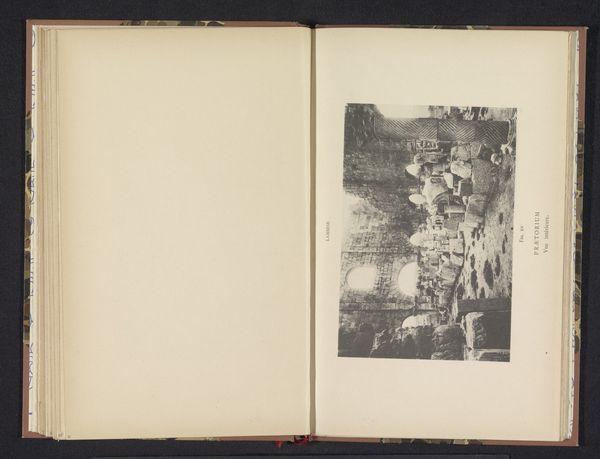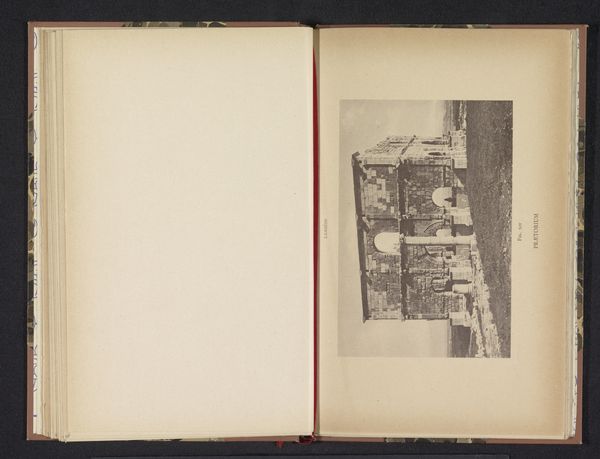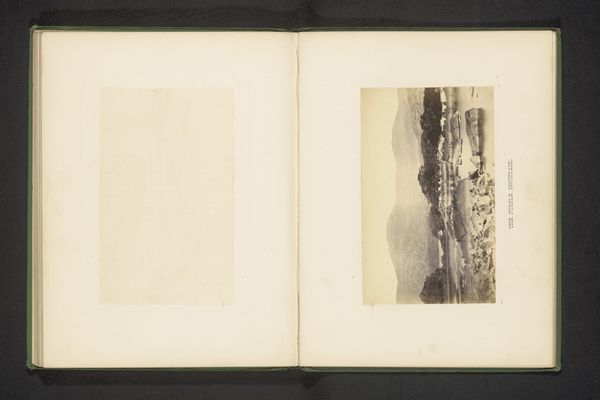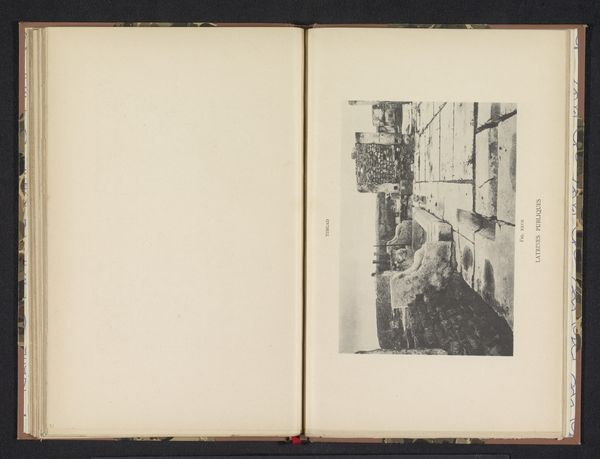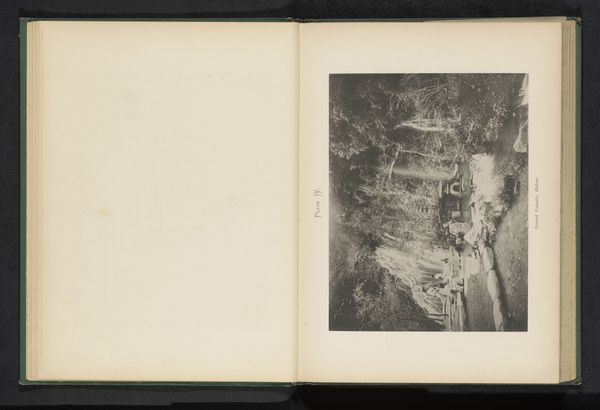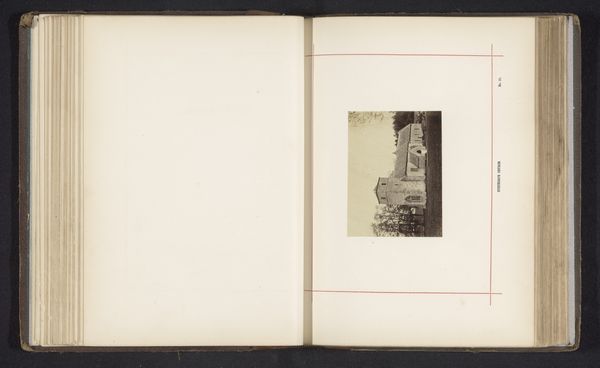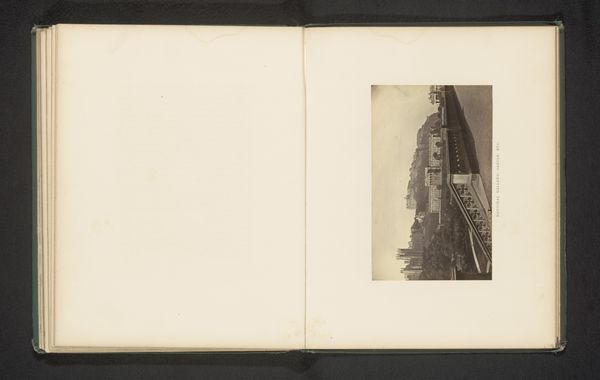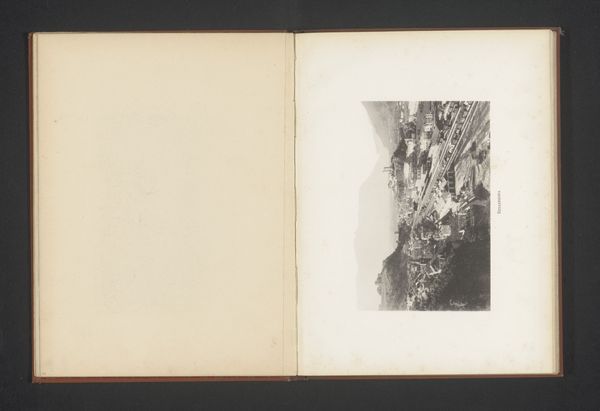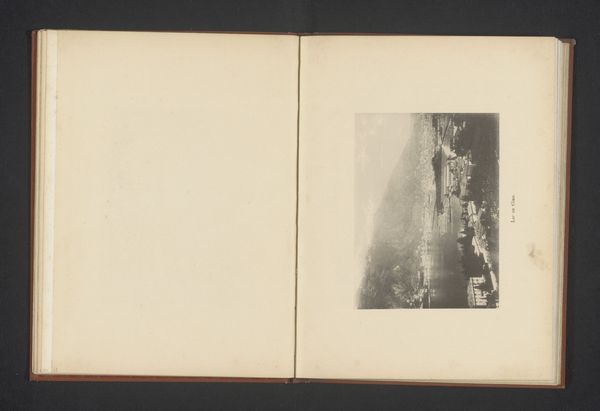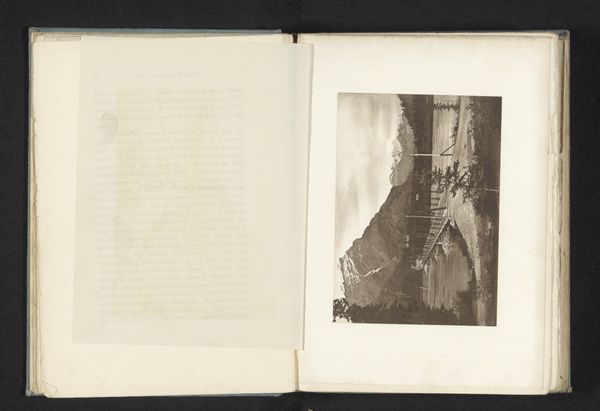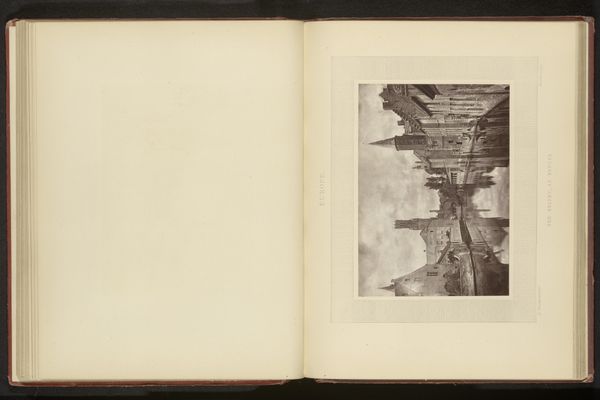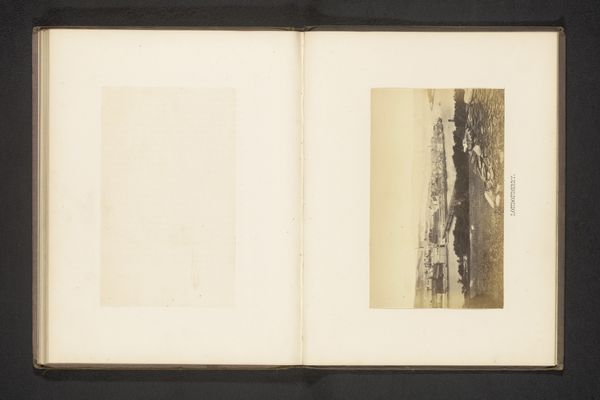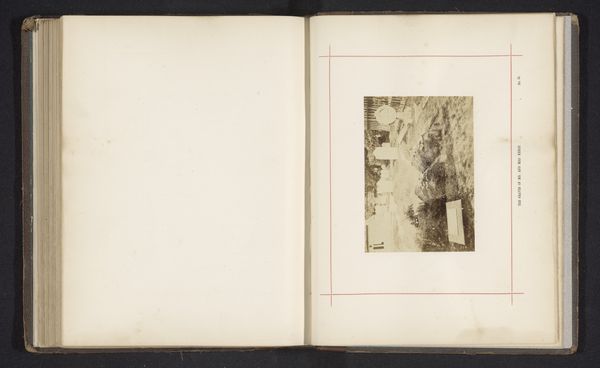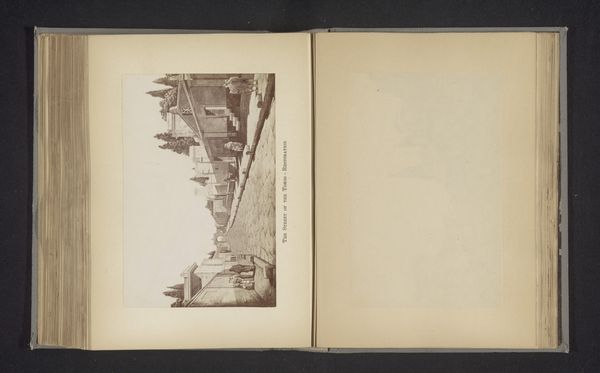
Gezicht op de ruïne van een tempel van Asklepios en Hygieia bij Lambaesis in Algerije before 1894
0:00
0:00
print, photography, architecture
#
ink paper printed
# print
#
landscape
#
photography
#
coloured pencil
#
ancient-mediterranean
#
watercolor
#
architecture
Dimensions: height 106 mm, width 150 mm
Copyright: Rijks Museum: Open Domain
Curator: This print, created before 1894, depicts the ruins of a temple dedicated to Asklepios and Hygieia near Lambaesis in Algeria. Editor: It looks desolate, doesn't it? A real picture of lost grandeur. Sort of makes you feel small, like a forgotten whisper in a massive stone library. Curator: Indeed. Lambaesis was a significant Roman military camp, and this temple would have been a central part of civic and religious life. Its state of ruin speaks volumes about the shifts in power, the movement of people, and the transformations of belief systems across centuries. Editor: You know, I keep looking at those columns and picturing the people who stood there, felt the same sun on their faces. Were they hoping for healing, maybe from Asklepios? You can almost hear their echoes in the stones. Do you think they envisioned it falling into such beautiful decay? Curator: Very unlikely. For them, it was a testament to their society's strength and order. The visual representation, though captured through photography, presents an interesting case. The architecture immortalized suggests permanence but this is juxtaposed with time's passage represented in its brokenness. Editor: And yet, that decay…it’s where the real magic happens. It gains depth, character... kind of like an old soul showing through wrinkled skin, wouldn't you agree? Like stories etched in stone for those patient enough to read them? Curator: Yes, the photograph, bound within a printed volume, served initially to document and communicate Roman presence in North Africa within the context of European colonialism. These kinds of depictions legitimized and normalized colonial domination, which contrasts ironically with today's understanding and appreciation for preservation. Editor: Exactly, it becomes something different, transcending time. I wonder how many people flicked through these pages, never imagining they'd feel moved by such history laid bare! Well, I know I didn't expect to be this introspective so early in the morning! Curator: The power of art, or rather, what time and context does to art! Editor: Right, guess I will go find my coffee. History has made me thirsty.
Comments
No comments
Be the first to comment and join the conversation on the ultimate creative platform.
